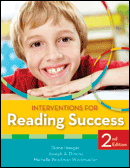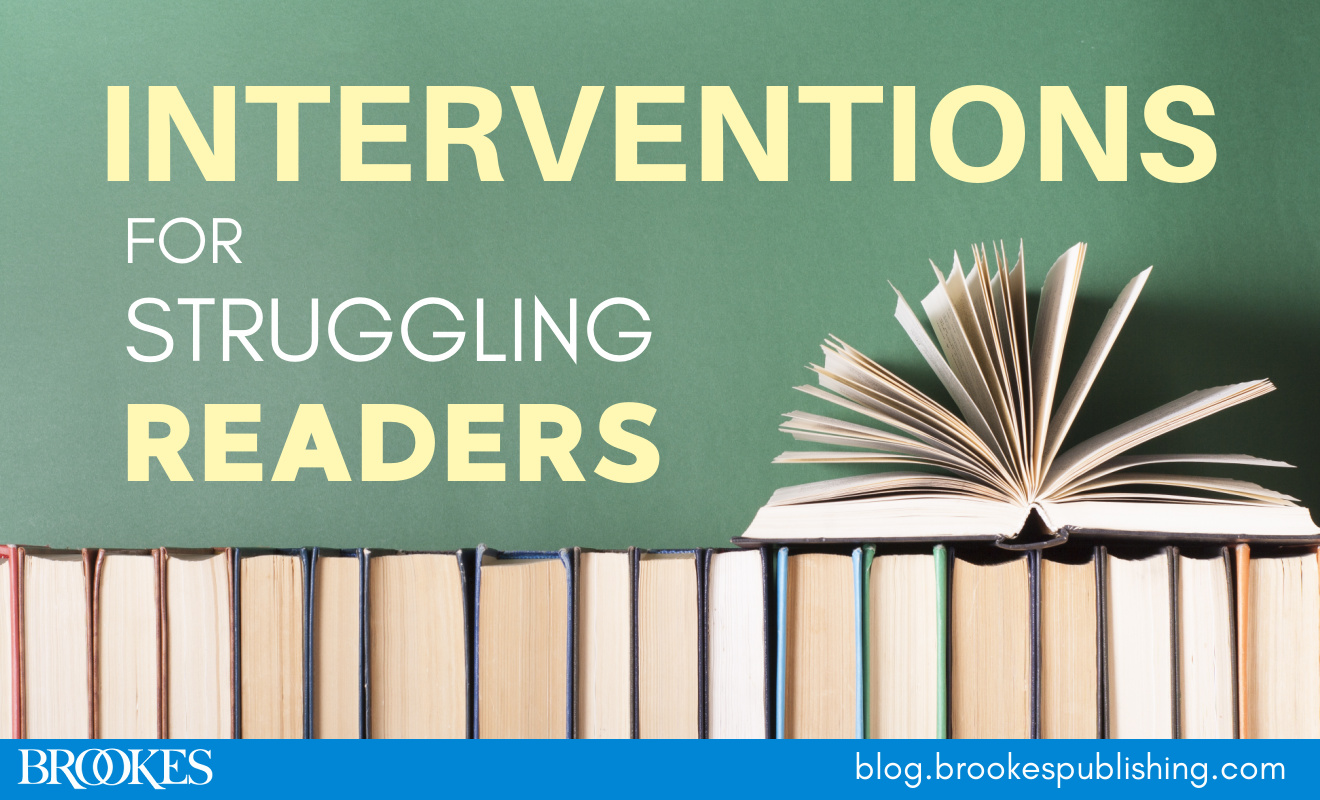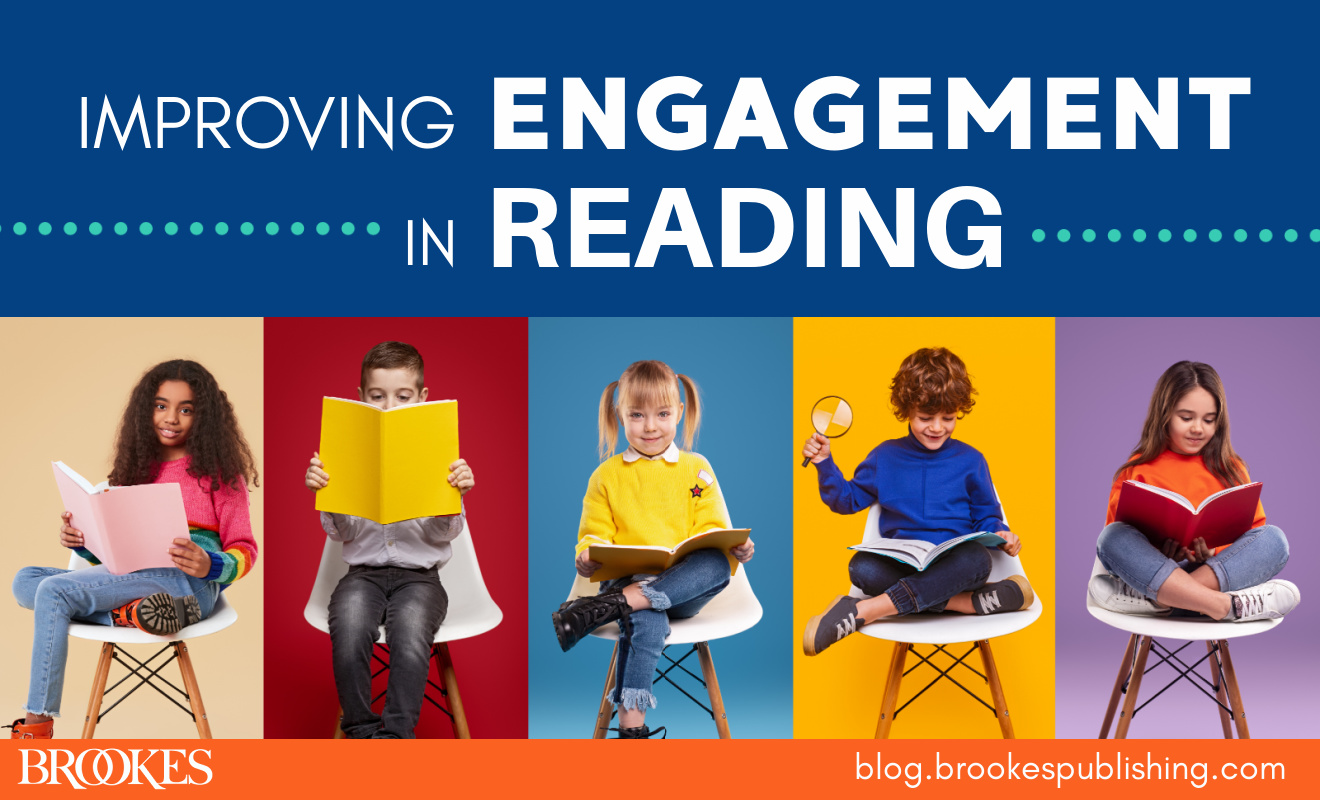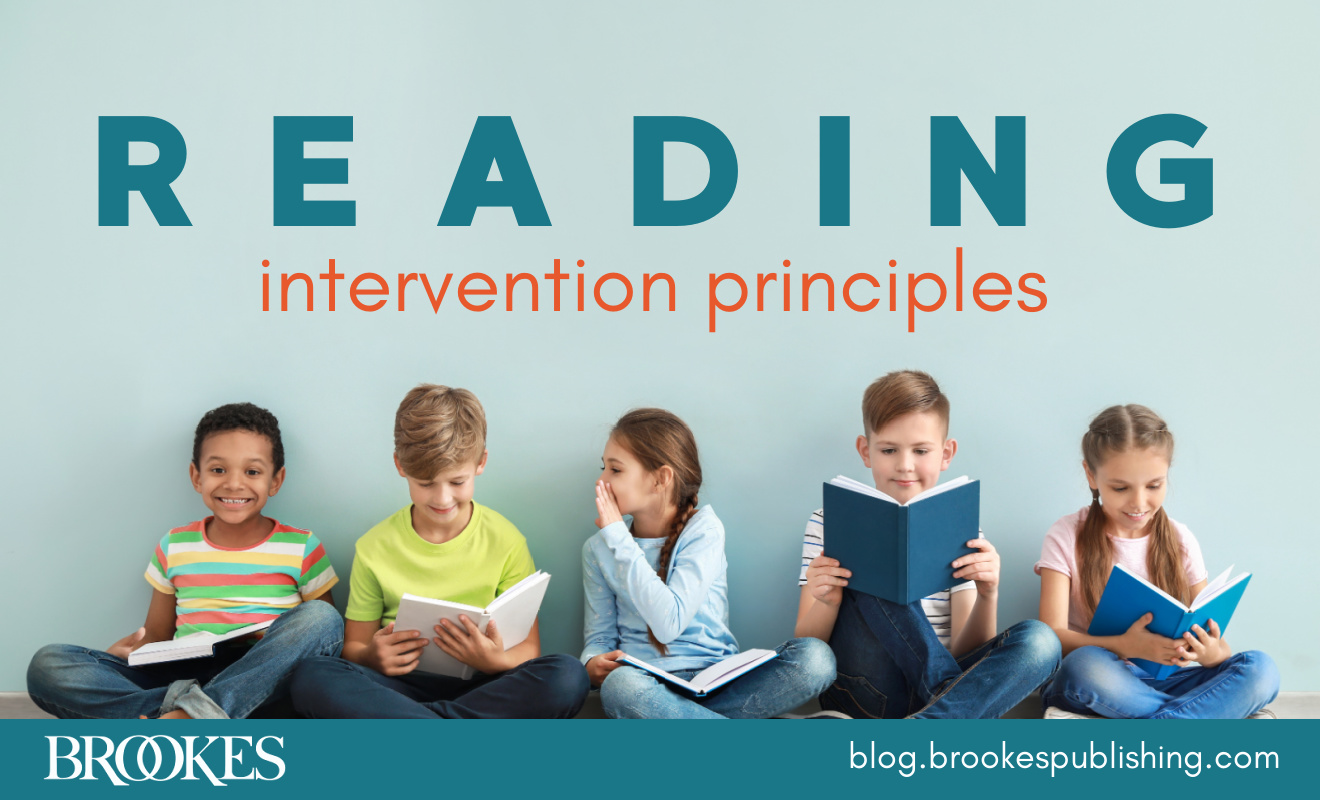When early reading problems go undetected and unaddressed in the first years of school, students often fall so far behind that they never catch up to their peers. Early identification and intervention is the key to preventing the long-term negative effects of reading difficulties—and reading intervention should be available in the early grades to any students who need it.
Today’s post reviews five key principles for implementing an effective reading intervention program for students in Grades K–3. Excerpted and adapted from Interventions for Reading Success, Second Edition, by Diane Haager, Joseph A. Dimino, & Michelle Pearlman Windmueller, this post provides a preliminary guide for teachers developing supplemental instruction to meet the needs of individual students.
Principle 1: Focus on the Big Ideas of Reading
 Five essential components of reading instruction should be taught in the early grades: phonological awareness, alphabetic principle, fluency with connected text, vocabulary development, and comprehension. As students move beyond the beginning level, they learn more complex decoding concepts and further develop their fluency, vocabulary, and comprehension. It’s critically important to provide systematic and explicit instruction in these “Big Ideas” during reading intervention for struggling readers. (Interventions for Reading Success offers guidance on how to teach the Big Ideas through research-based activities.)
Five essential components of reading instruction should be taught in the early grades: phonological awareness, alphabetic principle, fluency with connected text, vocabulary development, and comprehension. As students move beyond the beginning level, they learn more complex decoding concepts and further develop their fluency, vocabulary, and comprehension. It’s critically important to provide systematic and explicit instruction in these “Big Ideas” during reading intervention for struggling readers. (Interventions for Reading Success offers guidance on how to teach the Big Ideas through research-based activities.)
Principle 2: Use Assessment to Guide Intervention
 Ongoing assessment is essential for making important intervention decisions. Teachers implementing a tiered intervention model should use three kinds of assessment to make critical decisions about reading intervention:
Ongoing assessment is essential for making important intervention decisions. Teachers implementing a tiered intervention model should use three kinds of assessment to make critical decisions about reading intervention:
- Screening is used to catch struggling readers early. At the beginning and midpoint of the school year, teachers conduct universal screening, assessing all students and examining the data to see which students are failing to meet specified benchmarks.
- Diagnostic assessment is then conducted for these students. The teacher conducts individualized assessment covering specific developmental reading skills to determine areas of need for individual students, which helps the teacher better understand why a student is struggling.
- Progress monitoring assessment provides frequent checks of students’ progress toward specified goals. These assessments consist of short tasks that represent the identified area of need in the continuum of reading skills. Teachers chart the scores and use this information to adjust instruction or individual goals as students progress.
Screening and assessment helps give teachers a complete understanding of where their students struggle. Using that information, teachers can then target interventions to meet those specific skill needs for each student.
Principle 3: Provide Systematic and Explicit Reading Intervention
There are two key qualities of a good intervention program for readers who are at risk: Such a program is systematic and explicit.
- Systematic intervention means that intervention frequently and routinely happens and follows a well-defined sequence. The most effective reading intervention programs occur daily or several times per week and are long enough to allow for concept development and practice with skills.
- Explicit instruction occurs when the teacher provides direct and focused instruction. The teacher makes it clear what is being taught, models and explains the task, provides opportunities for students to practice the skill, and provides specific feedback. Learning is most effective when students are fully engaged in the task.
Intervention activities should be focused rather than merely touching on a concept or providing exposure to an idea. Intensive instruction also involves the students actively responding rather than passively learning. Instead of telling students how to do something, explicit instruction requires that students perform a skill or engage in dialogue about or explanation of that skill.
Principle 4: Organize the Classroom Routine and Environment
 Teachers consistently report that their greatest challenge is finding time to reach all students. There is no magic formula for creating more time in the school day, so it’s important for teachers to make the best use of the time they have. Twenty to thirty minutes per day devoted to intervention is well worth the investment. Most teachers include small-group time during their language arts time, which is ideal for group intervention activities.
Teachers consistently report that their greatest challenge is finding time to reach all students. There is no magic formula for creating more time in the school day, so it’s important for teachers to make the best use of the time they have. Twenty to thirty minutes per day devoted to intervention is well worth the investment. Most teachers include small-group time during their language arts time, which is ideal for group intervention activities.
A successful reading intervention program must be planned and systematically incorporated into the classroom routine. Consistency is important. Some schools run their intervention programs before or after school. In addition to having planned group time, occasional small blocks of time can be scheduled for intervention. During the 5–10 minutes before recess or lunch, a teacher could work with three or four struggling readers while other students finish seatwork. This would provide one more learning opportunity for students. (Interventions for Reading Success provides more information about how to schedule and implement a successful reading intervention program.)
Efficiency is a key ingredient in finding more time for reading intervention. A great deal of time is typically wasted making the transition from one activity to the next, and teachers often spend several minutes on behavior management between activities. The longer transitions take, the more management is required. Working on swift and seamless transitions can free up more time for important intervention activities.
Principle 5: Use Paraprofessionals and Specialists to Support Intervention
Paraprofessionals and specialists can be helpful in implementing intervention, and their services should be used strategically.
 Be sure to provide specific training and explanation to paraprofessionals to ensure that reading intervention activities are done appropriately and well. Classroom teachers may wish to work with struggling students in proximity to the paraprofessional to model the techniques for the paraprofessional, and then rotate groups so the paraprofessional can work with the group later or the next day. By rotating groups, the teacher maintains consistent contact with students but can still use the valuable help of support personnel.
Be sure to provide specific training and explanation to paraprofessionals to ensure that reading intervention activities are done appropriately and well. Classroom teachers may wish to work with struggling students in proximity to the paraprofessional to model the techniques for the paraprofessional, and then rotate groups so the paraprofessional can work with the group later or the next day. By rotating groups, the teacher maintains consistent contact with students but can still use the valuable help of support personnel.
A resource specialist or reading specialist can also be an essential support to the classroom during intervention time. Resource specialists who visit general education classrooms might work with struggling students while providing special education services to students on their caseload. Some schools may have reading specialists on staff to work with students who need additional help. Taking these services into the classroom in a collaborative teaching model provides additional opportunities for students to receive intervention.
Classroom teachers should not over-rely on paraprofessionals or specialists to implement intervention in the classroom, nor should these professionals replace the classroom teacher in this role. While paraprofessionals and specialists can be helpful in providing intervention, the classroom teacher should consistently work with intervention groups. Ongoing contact with students allows the teacher to remain abreast of student growth or specific difficulties through observation of student performance.
Keep these five principles in mind while developing an effective reading intervention program for struggling K–3 students. And for 100+ activities you can use to help all students succeed with reading, check out the book behind today’s post!

Interventions for Reading Success
Second Edition
By Diane Haager, Ph.D., Joseph A. Dimino, Ph.D., & Michelle Pearlman Windmueller, Ph.D.
Help transform struggling K–3 students into skillful, enthusiastic readers—in just 20 to 30 minutes a day! This bestselling curriculum supplement is your key to helping all students grasp the five Big Ideas of early literacy: phonological awareness, the alphabetic principle, fluency, vocabulary, and comprehension. You’ll get more than 130 research-based, teacher-tested activities you can use right now, with any core reading program, to help struggling students meet grade level standards and spark a lifelong love of reading.
Stay up to date on the latest posts, news, strategies, and more!
Sign up for one of our FREE newslettersMore posts like this

Q&A: How to Fit Interventions for Struggling Readers into Your Busy School Day
November 30, 2021
4 Ways to Engage and Motivate Students During Reading Tasks at School
November 11, 2021


Write a Comment
Your email address will not be published. Required fields are marked *
Post a Comment